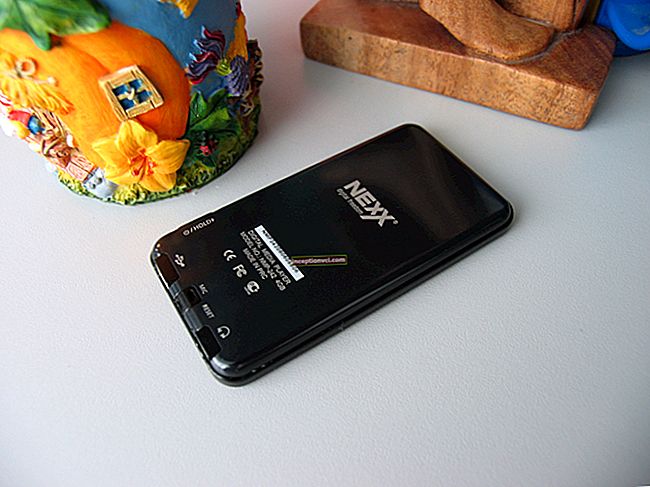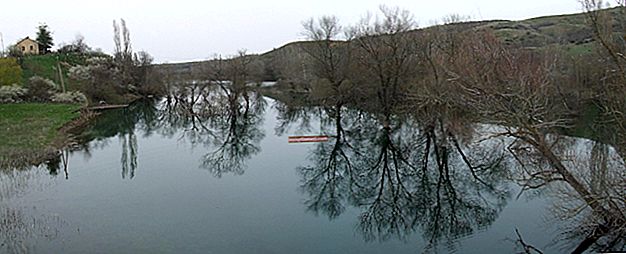Lipsticks, blush, nail polishes, mascaras, eyeliners have been around since BC. The first to be painted were the inhabitants of the tribes of Africa and the Australian aborigines. They dyed their hair, painted their faces, tattooed their bodies on the eve of holidays, ceremonies, military campaigns. Aggressive drawings instilled fear in the enemy and gave confidence in their own strength.

Such customs are still preserved among some peoples of Africa, Australia and South America. For example, aborigines carve pieces of skin on boys' faces in the form of marks. Or they get tattoos that are considered holy. And women from Easter Island dye their hair strictly red.
Lipstick: a history of originThe first lipstick was found during excavations of an ancient settlement. Its composition is no different from the current one. Even then, primitive people noticed how depressingly natural and mineral dyes affect the skin. And we learned to mix them with oils and animal fats.
The history of cosmetics: in ancient Egypt
It is believed that the first cosmetics appeared in ancient Egypt. They knew about the means of beauty thousands of years before the birth of Christ. During excavations of previous burials, flasks with ointments and incense were found, which contained incense and oil.
In an Egyptian burial, the very first scroll with a list of useful cosmetic tips was discovered. It is written on papyrus, which is ~ 20 meters long. They also found flasks with the remains of white and blush. It is not surprising. Seven types of cosmetics were placed in the coffin for the dead pharaohs. Including face paints - black and malachite.

It was from the Egyptians that the fashion went to lengthen the eyes with the help of arrows. They brought dark lines along the eyelid, towards the temple.
- In ancient times, women used bright green pencils, which were obtained from crushed malachite.
- Later - black paint, mined by burning ivory and charcoal.
Then it was considered fashionable to paint nails green. And a mandatory attribute is to remove hair on the face and body. Just imagine, thousands of years ago they already knew a lot about razors and tweezers. To keep the skin smooth, Egyptian women were smeared with creams and oils. Old women painted over their gray hair with fat taken from the carcasses of black bulls. Or raven eggs. And so that the hair grows faster and remains thick, they used the fat of the lion.

In ancient Egypt, soap was revered. Before its appearance, they used soda or ash. But when they figured out how to make odorous bars, there was no limit to their perfection. Until now, our contemporaries find the most interesting recipes written on papyrus.
Cleopatra herself imbued the sails of the boat on which she sailed on the Nile with fragrant scents. Later, she reflected all her knowledge in a book on cosmetics.
Egyptian women skillfully weaved scented bumps into their hair, from which a unique amber smelled. The world's oldest perfume recipe of that time has come down to us, containing fragrance compositions. In ancient times, perfumes were made from olive oil. They added plants that contained essential oils. The filled vessel was infused for a week under the sun. During this time, the plants managed to give an aroma to olive oil, which did not smell of anything.

Much later, a more effective method was discovered by Arab alchemists. The Arabs learned how to obtain essential oils through steam distillation. The result was a persistent, strong smell. Vegetable oils are still formulated in whole compositions or used separately.
The history of make-up: in ancient Greece
The Greeks had a certain standard of beauty.Women powdered their faces with whitewash, and used eyeliner for their eyes. We got it from the combustion of special mixtures. To add pallor, before going to bed, masks of barley dough were applied to the face. An egg and spices were added to it.
It is ancient Greece that is famous for the first hairdressing salons, which served women and men. They were engaged in decorating a person. Therefore, people with cosmetic defects often turned to hairdressers. The mutilations were hidden under make-up. And those who wanted to stay young and beautiful longer were prescribed creams.
In those days, they were not ashamed to talk and write about cosmetic imperfections and skin diseases. Thinkers wrote recommendations for using masks and ointments for skin, hair and teeth.

And in Rome, the first baths and even solariums appeared. But along with cosmetics, Roman women preferred natural ingredients. They bathed in milk, bleached their hair with soap made on the basis of goat's milk and beech tree ash. Peroxide was used later. In the meantime, they did little: they washed their heads and walked under the scorching sun.
How they were painted in ancient Japan, China, India, in Russia
- In the land of the rising sun
The Japanese women shaved off their eyebrows and painted on black arches. They powdered with white, painted over birthmarks on the face and body, painted their lips red. Married women covered their teeth with black varnish. Typical Japanese women are small in stature, but on their heads they had a structure of five tiers. It was supported by a stick. To sleep with this hairstyle, small pillows were placed under the neck. They were placed on a special stand. To shine hair, Japanese women rubbed the curls with aloe juice. This is practiced in our time.
The men were painting on their mustaches. And the hair on the temples and the back of the head was shaved off, tying a tail on the top of the head. They treated their skin with care, applying various procedures.

- In ancient China
The men grew their hair and braids. From an early age, girls were bandaged with their feet to stop the growth of their legs. Chinese women bleached their faces, blushed cheeks, tinted eyebrows, covered long nails with red varnish.
- In India
Women also painted their eyebrows and eyelashes with black paint, their lips were golden, and their teeth were covered with a brownish tint.
- In Kievan Rus
Hygiene was of great importance. We washed in the baths, steamed with brooms, wiped ourselves with incense infused with herbs. Specially revered mint, thyme, nettle and St. John's wort. The Slavs knew a lot about cosmetics of animal and plant origin. They knew how to successfully combine them. For instance:
- the gloss on the skin was removed with cornflower infusion;
- dandruff was treated with nettles, coltsfoot and burdock roots.

In the Middle Ages, white skin came into fashion, which spoke of a noble origin. The presence of a blush indicated that the woman was licentious in behavior. Whitened persons with health risks. For example, arsenic was used in the powder. They had to look for an alternative, and they rarely used a compact.
During the Renaissance, cosmetics became popular in Europe as well. The first cosmetics were brought to France by Italian artists. They also taught me how to use makeup. And off we go. After a while, it became indecent to go out without makeup and without a wig. And then France took the lead in the preparation of cosmetics. Manufacturing recipes were kept secret and passed on by inheritance.
Watch a video about the secrets of ancient makeup
How the cosmetics industry developed
At a slow pace, but still, lipstick and blush came into fashion, which emphasized the freshness of the face. The cosmetics were made on the basis of natural ingredients: herbs and berries. But it happened that when creating a new recipe for a cosmetic product, harmful components such as mercury or acid were added to its composition.
Men of that time used cosmetics on an equal basis with women. But not for long. A law was passed according to which those who use cosmetics will be punished.Some peoples did not use cosmetics at all, putting naturalness in the first place. That is why many actresses were called fallen women. Self-respecting women made beauty with home remedies.

Not a single order banning the use of cosmetics has been successful. Cosmetic secrets have been passed down from one generation to the next in a variety of ways. Literature played an important role. One after another brand of decorative cosmetics began to appear, which gained fame.
- Later they created lip gloss and began to experiment with lipstick tones. However, in those days, the composition of lipstick included soap, which dried the lips.
- An eyelash curler is now available. It was worth fabulous money. But even the high cost of this device did not stop beauty lovers from using it.
Now, to stay beautiful, we offer any cosmetic products. If only there was a desire and a thicker wallet. But nothing beats inner beauty. If a person is loved and happy, he will be beautiful, despite his age.
Note: "How to choose a perfume to" get used to "the image, like family: 4 unusual rules"
Watch a video about the history of cosmetics









